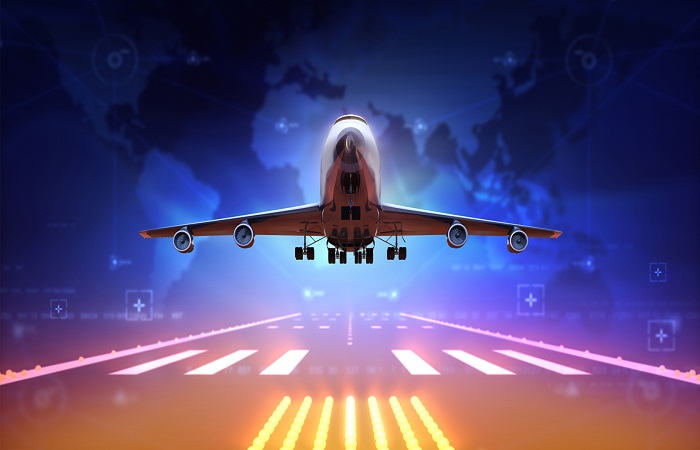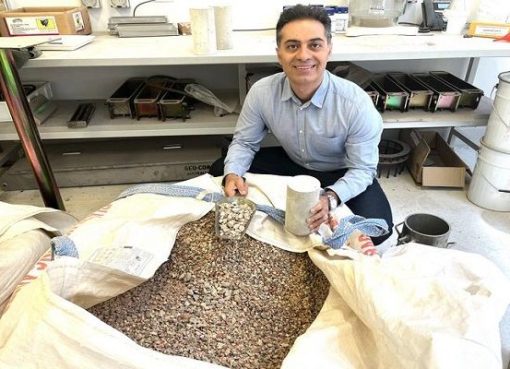Worried by the dire consequences of aviation industry operations to the global environment as well as the impacts on the future of the airline industry, seven aerospace industry Chief Technology Officers met at the Paris Airshow held in Le Bourget, Paris at the week to fashion out fresh modalities of operating the aviation and aerospace in a more environmentally and economically sustainable matter.
Present at the meeting were the following: Messrs Grazia Vittadini, Chief Technology Officer for Airbus; Paul Stein, Chief Technology Officer for Rolls-Royce; Greg Hyslop, Chief Technology Officer for The Boeing Company; Stéphane Cueille, Chief Technology Officer for Safran; Paul Eremenko, Chief Technology Officer for UTC; Bruno Stoufflet, Chief Technology Officer for Dassault Aviation; and Eric Ducharme, Chief Engineer for GE Aviation.
The meeting of these aviation technology experts had become necessary following the concerns raised by environmentalists that having aircraft flown high in the sky at altitudes above 40,000 feet above sea level held grave consequences given the huge volume of carbon emissions and the attendant impact on the ozone layer.
And the fact that it has been proven that activities from the global aviation sector (fossil fuel burnt flying aircraft) contributes to two percent of human-made carbon dioxide emissions also made it imperative for the industry to get together it’s technology experts to challenge themselves on how to reduce net CO2 emissions even while meeting the growing demand for air travel and transportation.
In a joint statement from the industry Chief Technology Officers (CTOs) made available to Daily Sun, the experts outlined policies and programmes geared at meeting the Carbon Offsetting and Reduction Scheme for International Aviation (CORSIA) program as agreed upon by the member nations of the International Civil Aviation Organization (ICAO) of which Nigeria is also a member.
Through the Air Transport Action Group (ATAG), the experts said ATAG), through the application of the right technology the aviation industry can limit the growth of net CO2 emissions by 2020.
“The aviation industry is already taking significant action to protect the planet and will continue to do so,” the statement said.
“The Chief Technology Officers of seven of the world’s leading aviation manufacturers are now each working at an unprecedented level to ensure the industry meets these aggressive and necessary commitments,” it added.
The strategy
The experts from the seven aviation technology firms identified three major technological elements to sustainable aviation even while cutting down on carbon emissions.
The first is to continue in the development of aircraft and engine design with a technology that ensures the pursuit of improvements in fuel efficiency and reduced CO2 emissions.
The second is by supporting the commercialisation of sustainable, alternate aviation fuels. Around 185,000 commercial flights have already proven that today’s aircraft are ready to use them.
And the third is by developing radically new aircraft and propulsion technology and accelerating technologies that will enable the ‘third generation’ of aviation.
Aircraft, engine design and technology
The experts noted that for the last 40 years, aircraft and engine technology has reduced CO2 emissions by a yearly average of over one percent per passenger mile. This has been the result of significant Research and Development (R&D) investments in materials, aerodynamic efficiency, digital design and manufacturing methods, turbomachinery developments and aircraft systems optimisation.
To the experts, there is the need to set more aggressive goals; a fuel-efficiency performance standard should be part of the ICAO certification process applied to every airplane.
“We however remain committed to improving existing aircraft and engine designs to continue the trajectory of improving efficiency as much as possible. Concurrently, we note the tremendous technological challenges ahead of us and the likely need to include more radical ‘third generation’ approaches,” the experts said.
Sustainable aviation fuels
The experts noted that aviation will continue to rely on liquid fuels as the fundamental energy source for larger and longer-range aircraft for the foreseeable future.
Even under the most optimistic forecasts for electric-powered flight, regional and single-aisle commercial airplanes will remain operating in the global fleet with jet fuel for decades to come. Therefore, the experts recommend the development of Sustainable Aviation Fuels (SAFs) which uses recycled rather than fossil-based carbon and meet strong, credible sustainability standards is an essential component of a sustainable future.
“Five pathways for production of SAFs have already been approved for use, with commercial scale production of one of these pathways already in place,” the experts said.
“We believe that accelerating production scale-up of all commercially viable pathways, while simultaneously developing additional lower cost pathways, is the key to success. This work is already underway at research institutions and within companies in various industrial sectors.
What is needed is an expansion of government support for technology development, production facility investment, and fuel production incentives around the world
“We are fully supportive of any fuel, which is sustainable, scalable, and compatible with existing fuels. We will work closely with fuel producers, operators, airports, environmental organisations and government agencies to bring these fuels into widespread aviation use well ahead of 2050,” the seven aerospace technology experts added.
The third era of aviation
The aviation technology experts said aviation is at the dawn of its third major era, building on the foundation laid by the Wright brothers and the innovators of the Jet Age in the 1950s.
Aviation’s third era, they said must therefore be enabled by advances in new architectures, advanced engine thermodynamic efficiencies, electric and hybrid-electric propulsion, digitization, artificial intelligence, materials and manufacturing. New materials will enable lighter aircraft, further improving efficiency.
Finally, the experts said there must be additional public and private commitment to establish a sound regulatory foundation to address the novel issues associated with emerging aviation technologies and to provide the necessary economic support for widespread SAFs commercialization.
Source: The Sun










